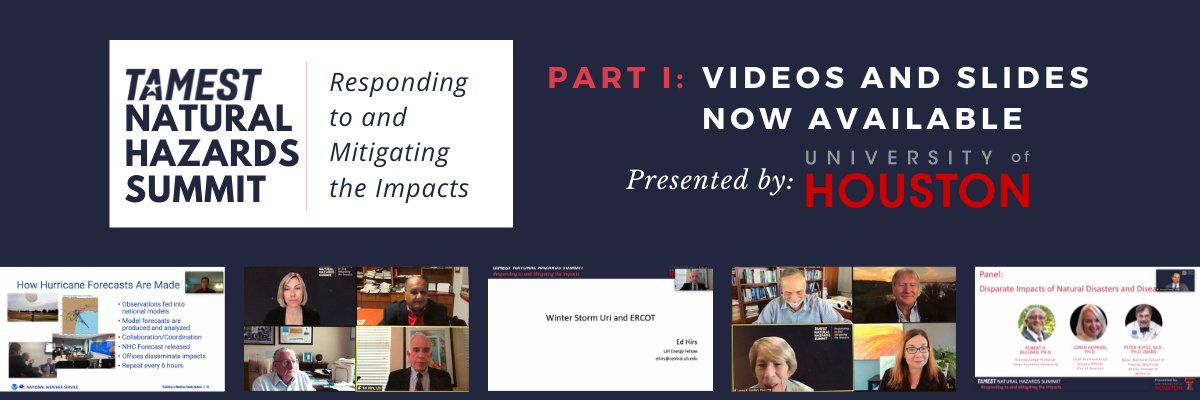TAMEST Hosts Virtual Natural Hazards Summit: Video Now Available

More than one hundred individuals from across the country joined TAMEST online on Tuesday, October 19 for Part I of the TAMEST Natural Hazards Summit: Responding to and Mitigating the Impacts. Video from the presentations is now available.
“We were eager to explore what is going on behind natural disasters to improve our responses to them and to best mitigate their impacts,” said TAMEST Board President David E. Daniel, Ph.D. (NAE), President Emeritus, The University of Texas at Dallas. “For me personally, I was most interested in the steps we can take to make situations better ten years from now, so that we aren’t waiting for the next natural disaster to strike.”
Part I of the Summit was presented by the Hurricane Resilience Research Institute (HuRRI) at the University of Houston and convened the top researchers, industry leaders and policy makers on natural disasters from both across Texas and across the country to take a hard look at what the state needs to know and do to prepare for future natural disasters, unprecedented weather events and global pandemics.
“What we learned is that the knowns are just as numerous as the unknowns, and the uncertainties we face – whether climate change or climate variability – really dictate that we take a more holistic, multi-threat level approach and evaluate many things at the same time,” said Summit Co-Chair Hanadi Riafi, Ph.D., P.E., John and Rebecca Moores Professor of Civil and Environmental Engineering, University of Houston. “We really need to take this type of thinking into everything that we do, and to look at not just risks that are associated with natural hazards, but the economic cost and benefits and impacts on society. I know it is a tall order, but it is an important one as we look forward, particularly here in Texas.”
“One of the things I took away from this discussion is that there is not one simple answer,” said Summit Co-Chair Kishor Mehta, Ph.D., P.E. (NAE), P.W. Horn Professor of Civil, Environmental and Construction Engineering, Texas Tech University. “We do have a lot of new science developed, but implementing science is the difficult part when you are working with human behavior. To me, in the years to come I think more effort needs to be put into human nature and awareness to get people to accept what we already know.”
Part II of the TAMEST Natural Hazards Summit will take place in Lubbock, Texas on May 16, 2022 at Texas Tech University’s International Cultural Center. It will examine the warning, response, and engineering aspects of natural hazards with a focus on tornadoes, thunderstorms, drought and hail.
Video from the presentations is now available from Part I. Please visit TAMEST.org/natural-hazards-summit for more information on Part II.

